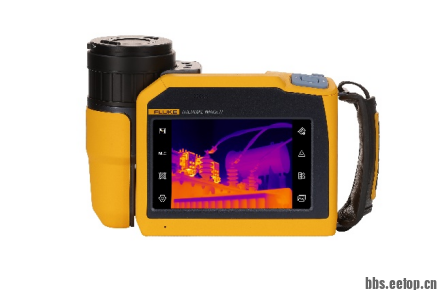日志
Newnes Radio and RF Engineering Pocket Book [Steve Winder Joe Carr OXFORD]
|
 Radio and RF Engineering Pocket Book.pdf.rar
Radio and RF Engineering Pocket Book.pdf.rar
(2008-09-14 22:34:01, Size: 1.61 MB, Downloads: 40)
Contents
Preface to second edition xi
Preface to third edition xiii
1 Propagation of radio waves 1
1.1 Frequency and wavelength 1
1.2 The radio frequency spectrum 1
1.3 The isotropic radiator 3
1.4 Formation of radio waves 3
1.5 Behaviour of radio waves 7
1.6 Methods of propagation 13
1.7 Other propagation topics 18
References 24
2 The decibel scale 25
2.1 Decibels and the logarithmic scale 25
2.2 Decibels referred to absolute values 25
3 Transmission lines 35
3.1 General considerations 35
3.2 Impedance matching 35
3.3 Base band lines 36
3.4 Balanced line hybrids 36
3.5 Radio frequency lines 37
3.6 Waveguides 45
3.7 Other transmission line considerations 47
References 51
4 Antennas 52
4.1 Antenna characteristics 52
4.2 Antenna types 56
4.3 VHF and UHF antennas 60
4.4 Microwave antennas 69
4.5 Loop antennas 73
References 78
5 Resonant circuits 79
5.1 Series and parallel tuned circuits 79
5.2 Q factor 81
5.3 Coupled (band-pass) resonant circuits 81
References 84
v
vi
6 Oscillators 85
6.1 Oscillator requirements 85
6.2 Tunable oscillators 85
6.3 Quartz crystal oscillators 87
6.4 Frequency synthesizers 89
6.5 Caesium and rubidium frequency standards 93
References 94
7 Piezo-electric devices 95
7.1 Piezo-electric effect 95
7.2 Quartz crystal characteristics 97
7.3 Specifying quartz crystals 101
7.4 Filters 102
7.5 SAW filters and resonators 105
References 109
8 Bandwidth requirements and modulation 110
8.1 Bandwidth of signals at base band 110
8.2 Modulation 112
8.3 analogue modulation 113
8.4 Digital modulation 123
8.5 Spread spectrum transmission 129
References 131
9 Frequency planning 132
9.1 International and regional planning 132
9.2 National planning 132
9.3 Designations of radio emissions 134
9.4 Bandwidth and frequency designations 135
9.5 General frequency allocations 135
9.6 Classes of radio stations 139
9.7 Radio wavebands 142
Reference 142
10 Radio equipment 143
10.1 Transmitters 143
10.2 Receivers 148
10.3 Programmable equipment 157
References 158
11 Microwave communication 159
11.1 Microwave usage 159
11.2 Propagation 159
vii
11.3 K factor 161
11.4 Fresnel zones, reflections and multi-path fading 161
11.5 Performance criteria for Analogue and digital
links 164
11.6 Terminology 165
11.7 Link planning 165
11.8 Example of microwave link plan 165
Reference 166
12 Information privacy and encryption 167
12.1 Encryption principles 167
12.2 Speech encryption 168
12.3 Data encryption 169
12.4 Code division multiple access (CDMA) or spread
spectrum 172
12.5 Classification of security 172
References 172
13 Multiplexing 173
13.1 Frequency division multiplex 173
13.2 Time division multiplex (TDM) 174
13.3 Code division multiple access (CDMA) 177
Reference 178
14 Speech digitization and synthesis 179
14.1 Pulse amplitude modulation 179
14.2 Pulse code modulation 179
14.3 ADPCM codecs 181
14.4 The G728 low delay CELP codec 181
14.5 The GSM codec 182
References 182
15 VHF and UHF mobile communication 183
15.1 Operating procedures 183
15.2 Control of base stations 186
15.3 Common base station (CBS) operation 186
15.4 Wide area coverage 187
16 Signalling 194
16.1 Sub-audio signalling 194
16.2 In-band tone and digital signalling 195
16.3 Digital signalling 197
16.4 Standard PSTN tones 198
References 199
viii
17 Channel occupancy, availability
and trunking 200
17.1 Channel occupancy and availability 200
17.2 Trunking 201
17.3 In-band interrupted scan (IBIS) trunking 203
17.4 Trunking to MPT 1327 specification 203
References 204
18 Mobile radio systems 205
18.1 Paging 205
18.2 Cordless telephones 206
18.3 Trunked radio 207
18.4 Analogue cellular radio-telephone networks 208
18.5 Global system mobile 209
18.6 Other digital mobile systems 211
18.7 Private mobile radio (PMR) 213
18.8 UK CB radio 213
References 213
19 Base station site management 214
19.1 Base station objectives 214
19.2 Site ownership or accommodation rental? 214
19.3 Choice of site 214
19.4 Masts and towers 215
19.5 Installation of electronic equipment 216
19.6 Earthing and protection against lightning 217
19.7 Erection of antennas 219
19.8 Interference 221
19.9 Antenna multi-coupling 225
19.10 Emergency power supplies 226
19.11 Approval and certification 227
References 227
20 Instrumentation 229
20.1 Accuracy, resolution and stability 229
20.2 Audio instruments 230
20.3 Radio frequency instruments 231
References 235
21 Batteries 236
21.1 Cell characteristics 236
21.2 Non-rechargeable, primary batteries 238
21.3 Rechargeable batteries 242
ix
22 Satellite communications 246
22.1 Earth orbits 246
22.2 Communications by satellite link 248
22.3 Proposed satellite television formats 248
22.4 Global positioning system (GPS) 252
References 255
23 Connectors and interfaces 256
23.1 Audio and video connectors 256
23.2 Co-axial connector 258
23.3 Interfaces 268
Reference 280
24 Broadcasting 281
24.1 Standard frequency and time transmissions 281
24.2 Standard frequency formats 283
24.3 UK broadcasting bands 284
24.4 BBC VHF test tone transmissions 284
24.5 Engineering information about broadcast services 287
24.6 Characteristics of UHF terrestrial television
systems 288
24.7 Terrestrial television channels 291
24.8 Terrestrial television aerial dimensions 294
24.9 AM broadcast station classes (USA) 295
24.10 FM broadcast frequencies and channel numbers
(USA) 296
24.11 US television channel assignments 299
24.12 License-free bands 301
24.13 Calculating radio antenna great
circle bearings 302
25 Abbreviations and symbols 307
25.1 Abbreviations 307
25.2 Letter symbols by unit name 313
25.3 Electric quantities 321
26 Miscellaneous data 323
26.1 Fundamental constants 323
26.2 Electrical relationships 323
26.3 Dimensions of physical properties 324
26.4 Fundamental units 324
26.5 Greek alphabet 325
x
26.6 Standard units 325
26.7 Decimal multipliers 327
26.8 Useful formulae 327
26.9 Colour codes 334
Index 337

 /2
/2 



 eetop公众号
eetop公众号 创芯大讲堂
创芯大讲堂 创芯人才网
创芯人才网